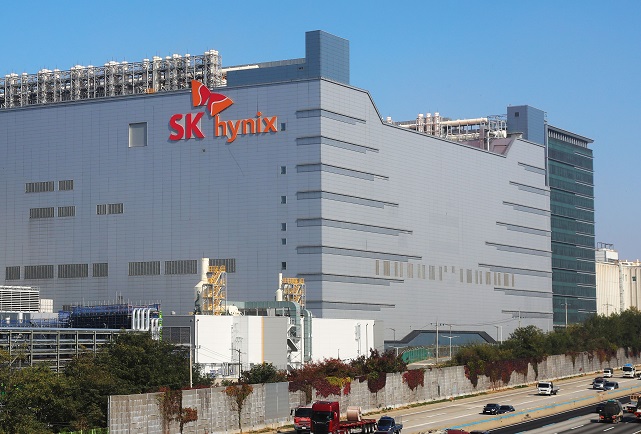
This photo provided by Samsung Electronics Co. on May 21, 2020, shows the company’s chip plant in Pyeongtaek, south of Seoul.
SEOUL, March 3 (Korea Bizwire) — Samsung Electronics Co. further upped its leadership in the global NAND flash market in the fourth quarter of 2020, a report showed Wednesday, despite revenue decline.
The South Korean tech giant, also the leader in the DRAM sector, had a 32.9 percent share of the global NAND flash market in terms of revenue in the October-December period, up 1.5 percentage points from a quarter earlier, according to market tracker TrendForce.
But Samsung’s revenue from NAND flash products came to a total of US$4.64 billion in the last three months of 2020, down 3.4 percent from a quarter earlier.
Samsung’s NAND flash bit shipments rose by 7-9 percent quarter-on-quarter on strong procurements from the smartphone and PC segments, according to TrendForce, but its average selling price (ASP) of NAND flash products declined by more than 10 percent from the previous quarter.
“With the market leaning toward oversupply, Samsung had to lower prices and thereby experienced a revenue decline,” TrendForce said.
Japan’s Kioxia Corp. was the runner-up with a 19.5 percent market share, up 2.3 percentage points from a quarter earlier, though its revenue plunged 11.4 percent quarter-on-quarter to $2.74 billion.
U.S. chipmaker Western Digital Corp. came in third with a 14.4 percent market share, down 1.1 percentage points from a quarter earlier, after its revenue dropped 2.1 percent quarter-on-quarter to $2.03 billion.

This photo, taken on Oct. 20, 2020, shows South Korean chipmaker SK hynix Inc.’s plant in Icheon, south of Seoul. (Yonhap)
South Korean chipmaker SK hynix Inc. ranked fourth with a 11.6 percent market share, down from an 11.7 percent share a quarter earlier. Its NAND flash revenue in the fourth quarter reached $1.63 billion, down 0.2 percent from three months earlier.
“SK hynix benefited from the aggressive stock-up activities of Chinese smartphone brands in the fourth quarter of 2020,” TrendForce said.
“Its bit shipments rose by 8 percent quarter-on-quarter, but its ASP also dropped by 8 percent quarter-on-quarter due to the general oversupply situation.”
Micron Technology Inc. and Intel Corp. came in fourth and fifth in the NAND flash market with market shares of 11.2 percent and 8.9 percent in the fourth quarter, respectively.
Intel, which agreed to sell its NAND flash business unit to SK hynix for $9 billion, saw its revenue increase 4.85 percent quarter-on-quarter to $1.2 billion.
Overall, the global NAND flash industry saw its revenue reach $14.1 billion in the fourth quarter, down 2.9 percent from a quarter earlier, as companies in server and data center segments continue to scale back their procurements.
TrendForce said the total bit shipments of the NAND flash industry posted a nearly 9 percent quarter-on-quarter increase in the last three months of 2020, but that was offset by the ASP decline of NAND flash products, which suffered a 9 percent decline from the previous three-month period.
Looking to the current quarter, TrendForce expected that NAND flash suppliers’ revenues are expected to suffer a further decline, while their bit output is likely to grow.
“As such, during price negotiations, NAND flash suppliers still expect the oversupply situation in the market to intensify and thereby further drive contract prices of NAND flash products downward,” TrendForce said.
(Yonhap)






